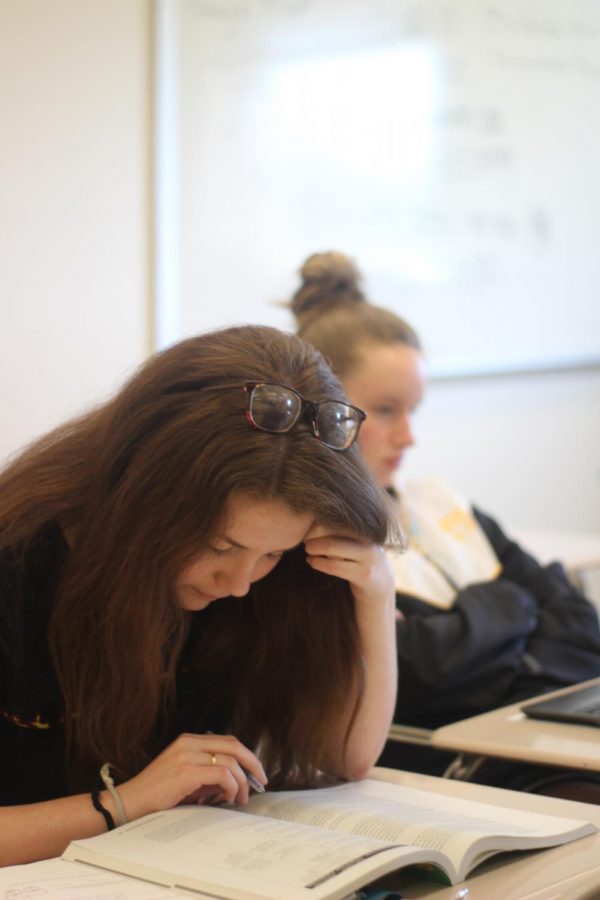Your donation will support the student journalists of The Tide, Richard Montgomery High School's student newspaper. Your contribution will allow us to purchase equipment and cover our annual website hosting costs.
MCPS asks families for their learning model preferences
December 7, 2020
The Tide file photo by Joyce Milandu
Prior to the school shutdown in March, RM graduate Lydia Levy studies in class.
In early November, the Montgomery County School Board announced a tentative framework for reopening schools. Students will be split into three groups, from highest priority to lowest priority. They will be allowed to return to school as corresponding health metrics are met.
Despite the debate over which students should be prioritized for in-person instruction, most officials, community members, and students agree that special education students and others that need face-to-face learning should be placed in the first group. As such, the first group includes kindergarten, first grade, some special education programs, sixth grade, freshmen, and students in career and technical education programs. The second group consists of pre-kindergarten, second grade, third grade, seventh grade and sophomores. The third group includes fourth grade, fifth grade, eighth grade, juniors and seniors.
“I don’t particularly understand the reasoning behind this specific and choppy grouping. I’m hoping that they modify it based on student input,” sophomore Ruth Taddesse said.
The phased return to schools would be based upon two health metrics: the county’s 14-day average increase in new cases per 100,000 residents, and the 14-day raw average of new cases. MCPS would require no more than five new cases per 100,000 people in the county and no more than 52 new cases for two weeks for all three groups to return to school.
Given such metrics, many community members deem the reopening phase to be unachievable. “Things are not going well right now. I don’t think there’s any chance that we would have in-person learning this school year,” sophomore Shawn Pourifarsi said.
On Nov. 11, the county released a survey to all MCPS families to express their preferences for a learning model for the second semester. The school board intends to refer to these responses to determine which schools will open, the frequency of classes, and the method of transportation.
While efforts to return to school continue, RM students have expressed a variety of sentiments regarding virtual learning. Some find it to be relaxing and more lenient than in-person instruction, whereas others find it disorienting and unhelpful.
There are three spheres of their lives that students feel are most impacted: the academic sphere, the social sphere, and the mental health sphere. The significant reduction in class time, lack of engagement, and other factors are raising concerns about the lack of preparation among students who are expecting challenging exams at the end of the year. “It’s not very bonding to learn through a video. I think the current virtual model kind of sets up students to do poorly on AP exams and college admission tests,” Pourifarsi said.
Some students miss the natural social interactions of in person school. “I really enjoyed walking around the classroom a few seconds before the start of class, getting lost on the way to class with friends, and complimenting random students in the hallway on a cool jacket or backpack!” junior Lulu August said. “Nowadays, most interactions are intentional and planned. It still feels weird and a little disconnected.”
The overarching consequence is the lack of bonding between teachers and students or among students. At its extreme, this can take a toll on one’s mental well-being. “Life is stagnant. There’s a lack of motivation and I don’t know what I’m working for other than the simple notion of completing this assignment,” Taddesse said.
The rising COVID-19 cases in conjunction with the cold and flu season is not a positive sign for advances to recovery. Students and families are encouraged to take precautions and expect virtual learning to continue for some time, while also staying informed of the county’s decisions.
